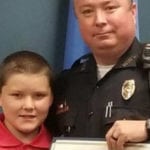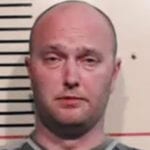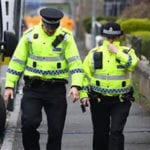 Technology
Technology  Technology
Technology  Humans
Humans 10 Everyday Human Behaviors That Are Actually Survival Instincts
 Animals
Animals 10 Animals That Humiliated and Harmed Historical Leaders
 History
History 10 Most Influential Protests in Modern History
 Creepy
Creepy 10 More Representations of Death from Myth, Legend, and Folktale
 Technology
Technology 10 Scientific Breakthroughs of 2025 That’ll Change Everything
 Our World
Our World 10 Ways Icelandic Culture Makes Other Countries Look Boring
 Misconceptions
Misconceptions 10 Common Misconceptions About the Victorian Era
 Mysteries
Mysteries 10 Strange Unexplained Mysteries of 2025
 Miscellaneous
Miscellaneous 10 of History’s Most Bell-Ringing Finishing Moves
 Technology
Technology Top 10 Everyday Tech Buzzwords That Hide a Darker Past
 Humans
Humans 10 Everyday Human Behaviors That Are Actually Survival Instincts
 Animals
Animals 10 Animals That Humiliated and Harmed Historical Leaders
Who's Behind Listverse?

Jamie Frater
Head Editor
Jamie founded Listverse due to an insatiable desire to share fascinating, obscure, and bizarre facts. He has been a guest speaker on numerous national radio and television stations and is a five time published author.
More About Us History
History 10 Most Influential Protests in Modern History
 Creepy
Creepy 10 More Representations of Death from Myth, Legend, and Folktale
 Technology
Technology 10 Scientific Breakthroughs of 2025 That’ll Change Everything
 Our World
Our World 10 Ways Icelandic Culture Makes Other Countries Look Boring
 Misconceptions
Misconceptions 10 Common Misconceptions About the Victorian Era
 Mysteries
Mysteries 10 Strange Unexplained Mysteries of 2025
 Miscellaneous
Miscellaneous 10 of History’s Most Bell-Ringing Finishing Moves
10 Cops Who Were Convicted For Killing In The Line Of Duty
While killer cops are unfortunately nothing new in modern society, these police officers were not involved in malice, criminal activity, or corruption. Instead, they killed someone in the line of duty and were charged with crimes stemming from the death.
When a death is caused by a police officer, the officer responsible is rarely charged with a crime. Even when they are charged, they are unlikely to be convicted, especially of something like second-degree murder. One reason is that a jury of 12 people needs to agree, beyond reasonable doubt, that the officer used excessive force or did something illegal that caused the death. Also, everyone knows that police work can be fast-paced and highly stressful; people tend to give officers the benefit of the doubt when it comes to those life-and-death moments. Therefore, it is very difficult to convict police officers for killing someone in the line of duty.
10 Jason Blackwelder
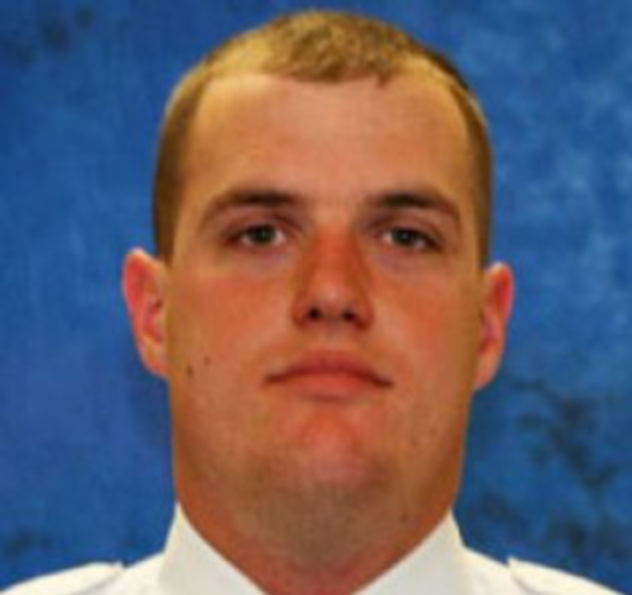
On July 31, 2013, off-duty police officer Jason Blackwelder was going with his wife to Walmart to pick up some school supplies in Conroe, Texas. Once he was there, Blackwelder saw 19-year-old Russell Rios running from the Walmart while being chased by security guards.
Blackwelder joined in the chase and ended up alone with Rios in a forested area. Blackwelder, who was armed with a gun that wasn’t in a holster but in the waist of his pants, claimed that Rios got him in a choke hold and he feared for his life. So Blackwelder fired his gun, and it killed Rios. However, forensic evidence didn’t back up Blackwelder’s story. Rios had a trail of gunpowder going up the middle of his back, and he had been shot in the back of the head.
In June 2014, Blackwelder was charged with killing Rios, who had stolen two iPod cases. Blackwelder was convicted of second-degree manslaughter by a jury, was given five years probation, and lost his job on the police force. Rios’s family is currently in the process of suing Blackwelder and the Conroe Police Department.
9 Randy Trent Harrison
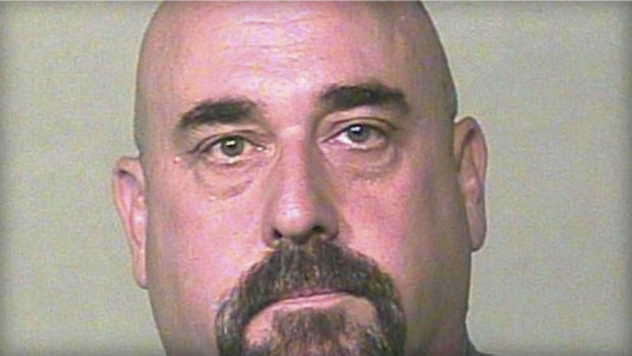
Del City, Oklahoma, police Captain Randy Trent Harrison had been investigating drug dealing around Del City High School. One young man on his radar was 18-year-old Dane Scott Jr.; they had run-ins on at least three different occasions. On March 14, 2012, Harrison saw Scott selling marijuana around the high school from a car. Scott sped off and Harrison and another officer followed in their car, leading to a high-speed chase that ended in an accident. Scott fled the scene of the accident, but Harrison tackled him and took a gun away from him. Scott got away again and started running. Scott was wearing baggy pants, and he kept pulling at them to make sure he didn’t trip on them while running. Harrison claims that he thought that Scott had another weapon and was reaching for it. Despite the presence of bystanders and another officer who could have possibly been hurt, he opened fire. The last of Harrison’s four shots struck Scott’s lung and aorta, killing him.
In November 2013, Harrison went to trial, charged with first-degree manslaughter. Prosecutors said that Harrison had deliberately gone after Scott in a personal vendetta. The other officer who was at the scene said that he didn’t feel that Scott was a danger. In fact, he had shot Scott with a Taser at approximately the same time Harrison had shot him. Other witnesses said that Scott had his hands up when he was shot. A jury found Harrison guilty and he was sentenced to four years in prison.
8 Bryan Conroy
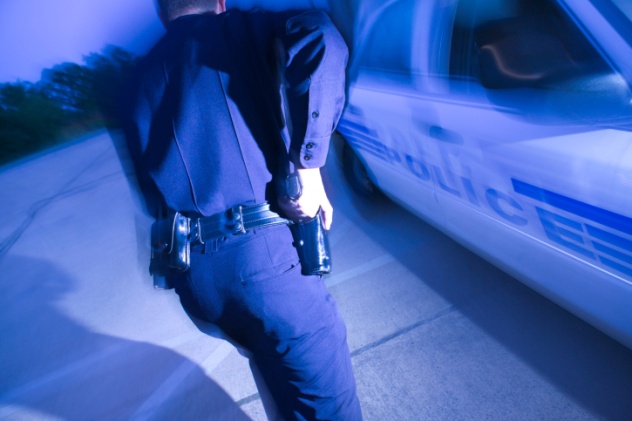
On March 22, 2003, police raided a warehouse that housed a CD and DVD piracy ring in Manhattan. NYPD officer Bryan Conroy was undercover during the raid and was dressed in a postal worker uniform. While Conroy was guarding a cart full of pirated CDs, 43-year-old art trader Ousmane Zongo, who was working on African artifacts in the warehouse, turned on the lights. Zongo, who didn’t speak much English, was afraid when Conroy pulled a gun, so he ran, and Conroy gave chase. Conroy had Zongo trapped in a dead end corridor and fired five shots, hitting Zongo four times, including two shots to the back.
Zongo wasn’t armed, and he was not involved with the piracy ring, which led to Conroy being charged with second-degree manslaughter. He was accused of not following procedure. For example, Conroy should have showed Zongo his badge instead of pointing his gun at him. A jury was deadlocked at 10-2 in his first trial, and a judge found him guilty of criminally negligent homicide at his second trial.
Conroy was given five years of probation and 500 hours of community service, and he was fired from the NYPD. Zongo’s family settled with the NYPD for $3 million.
7 Michael Ferguson

On October 3, 1999, in Pincher Creek, Alberta, 26-year-old Darren Varley was arrested for being drunk in public. Royal Canadian Mounted Police officer Michael Ferguson took him into a holding cell, where a scuffle ensued. Ferguson claims that Varley lifted his bulletproof vest over his face so he couldn’t see, and then Varley went for his gun. Ferguson claimed that, in self-defense, he shot Varley twice, once in the stomach and once in the head.
The shooting in the cell led to Ferguson being charged with second-degree murder. The prosecutors argued that the first shot to the stomach was self-defense, but the second shot to the head was unnecessary. Also, there was no evidence that Varley went for the gun. Notably, Varley’s fingerprints weren’t found on the weapon.
In his first two trials for second-degree murder, the jury was deadlocked. At his third trial in 2006, the jury found him guilty of manslaughter, and Ferguson was given a four-year sentence. However, he only spent two months in prison before being released on probation. After his third trial, Ferguson agreed he shouldn’t have fired the second shot.
6 Daniel Harmon-Wright
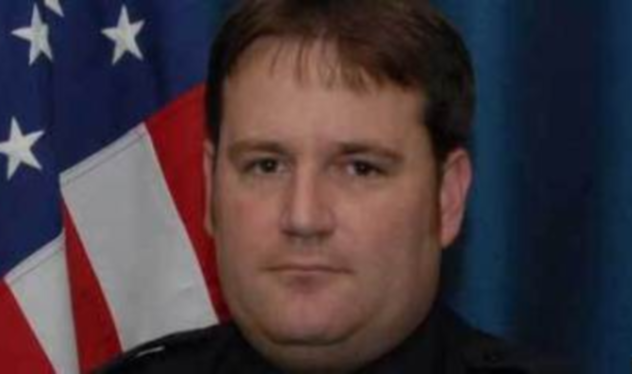
Daniel Harmon-Wright was hired by the Culpeper, Virginia, police department despite objections from superiors in the force. Apparently Harmon-Wright had problems with alcohol, and he had a poor attitude. While on the force, he had been disciplined for forcing his way into someone’s home and for brandishing a weapon, all without cause or a warrant.
On February 9, 2012, Harmon-Wright was responding to a call about a suspicious person sitting in a Jeep Wrangler in a school parking lot. Harmon-Wright found 54-year-old Patricia Ann Cook in the Jeep and started questioning her. According to Harmon-Wright, Cook rolled up the window with his arm still in it. His arm got stuck, and Cook started to drive away, dragging him along with it. He said that she was a danger to the public, and he started firing shots at her.
However, witnesses to the shooting that testified in court said that Harmon-Wright’s version wasn’t accurate. They said that his arm never got stuck and that one hand was on his gun while the other was on the door handle. He told Cook to stop rolling up the window or he’d shoot her. When she didn’t comply with his order, he shot at her twice so she sped off and he fired five more shots. She was struck by two of the bullets as she was driving away.
In May 2013, Harmon-Wright was convicted of voluntary manslaughter. He was looking at 25 years for the conviction, but he was ultimately sentenced to three years in prison.
5 Scott Smith
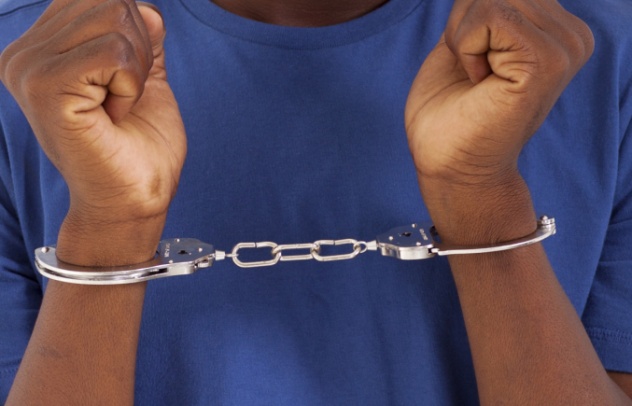
On December 28, 1998, 19-year-old Franklyn Reid was traveling through New Milford, Connecticut. The police were on the lookout for him because he was wanted for violation of his probation and harassment. When he saw some police officers, he ditched his car and took off running. A short time later, Officer Scott Smith and a partner spotted him. Reid tried to run again, so Smith chased him down and pinned him.
Smith claimed that Reid was on his knees and was giving him a menacing look. Reid apparently resisted when Smith tried to handcuff him, and he thought that Reid was going for a weapon. However, many witnesses to the incident said that Smith had Reid pinned to the ground with his foot on his back and his gun pressed against his spine. While the accounts differ leading up to the shooting, what is known is that Smith shot Reid once through the back, and he died as a result. A knife was found in Reid’s coat pocket, but he wasn’t wearing the jacket when he was shot; it was found a short distance away.
Smith was charged with murder and was found guilty of first-degree manslaughter. That conviction was overturned, and he pleaded guilty to criminally negligent homicide, which was a misdemeanor, meaning he didn’t have to do any jail time. Reid’s family settled a lawsuit with the police department for $1.7 million.
On May 19, 2013, Smith committed suicide via carbon monoxide poisoning. Reid’s family said they didn’t feel any guilt about the suicide, and they wondered why it took him so long to kill himself.
4 Joseph Mantelli

In the early morning of February 14, 1998, officer Joseph Mantelli and Sergeant Steve Marquez were sitting in a marked police car in Las Vegas, New Mexico. They spotted a white Toyota truck that Marquez had chased earlier in the day for going the wrong way on a one-way street. The truck was able to get away because Marquez’s car became disabled. The officers turned on their police lights and followed the truck. The driver of the white truck sped up and ran a number of stop signs in an attempt to evade them.
A short distance later, the driver of the truck, 18-year-old Abelino Montoya, came to a dead end and slammed on his brakes to make sure the truck didn’t crash into a brick wall. He also started to back up in order to turn down a road and continue his evasion. This is where the versions of the story start to differ. According to Mantelli and Marquez, they were rammed twice, and Mantelli said he feared for his life. He fired twice, both shots striking Montoya. The passenger in the truck said that Montoya was only trying to escape, and the truck only hit their car once when they were reversing to get away. They didn’t intentionally ram the police car. After that collision, Mantelli got out of the car with his gun drawn and broke the driver’s side window with two strikes from the butt of his gun. The truck took off, and Mantelli fired two deadly shots.
The physical evidence and the testimony of Mantelli’s roommate (who said that Mantelli had claimed that he shot at the truck so it wouldn’t get away) backed up the passenger’s story. In 1999, Mantelli was convicted of voluntary manslaughter and was given 12.5 years in prison. Sergeant Marquez testified at the trial and had the charges against him dropped because of an immunity deal he had made with the district attorney.
3 Damien Ralph
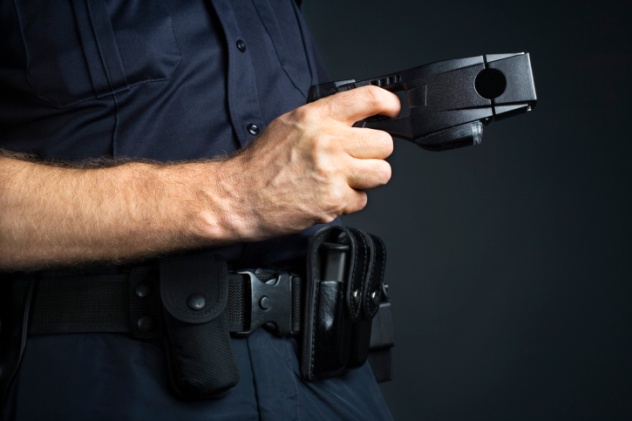
It was the afternoon of St. Patrick’s Day 2012 in Sydney, Australia, and 21-year-old Roberto Laudisio Curti, who was from Brazil, was doing LSD with two friends. Curti, under the influence of the drugs, removed some of his clothes. He then jumped over the counter of a convenience store and stole some biscuits. Someone dialed 0–0–0 (Australia’s emergency number), and the operator, quite incorrectly, told officers that it had been an armed robbery. The report of a half-naked armed robber running around had officers combing the area, and around a dozen police officers chased him, but Curti managed to elude capture twice.
Finally, he was brought down with a Taser, and he was Tasered 13 more times, including seven times in 51 seconds and once while he was handcuffed. One officer, Damien Ralph, used three bottles of pepper spray on Curti. Eight minutes after the last Taser shock, they discovered that Curti no longer had a pulse.
It was unclear what exactly killed Curti, but the coroner’s report said that it was clear that the police had been reckless and used extreme force. Four officers who were at the scene were charged with assault in the death of the 21-year-old. The three police officers that used the Tasers were acquitted, but the police officer that used the pepper spray, Damien Ralph, was found guilty of assault. However, since Ralph had suffered psychologically from the death, the judge agreed not to give him a criminal conviction, meaning he won’t spend any time in prison.
2 Johannes Mehserle
In the early hours of New Year’s Day 2009, Bay Area Rapid Transit (BART) police responded to a call about a fight on a train heading to the Fruitvale Station in Oakland, California. When they arrived, they pulled 22-year-old Oscar Grant III and his friends off the train.
Leading up to the shooting, which was filmed by a number of people, Grant appeared to be complying with the officers’ requests. He was sitting up against a wall with his hands in the air, and then two officers forced him to lie on his stomach. When he was forced to lie down, Grant started struggling as BART officer Johannes Mehserle and another officer tried to hold him down. Then Mehserle rose up, pulled out his gun, and shot Grant point-blank in the back with his pistol. Grant died the next morning in the hospital.
In court, Mehserle said that it was an accident; he thought that Grant was going for a weapon (he was unarmed), and he meant to grab his Taser but grabbed his gun by accident. In November 2010, Mehserle was convicted of involuntary manslaughter and was looking at a maximum sentence of 14 years. Instead, he was given a two-year sentence. The sentencing led to riots and 150 people were arrested. In the end, Mehserle only did 11 months. Grant’s mother reached a $2.8 million settlement with BART.
Grant’s tragic death was adapted into the award-winning film Fruitvale Station in 2013.
1 James Bonard Fowler
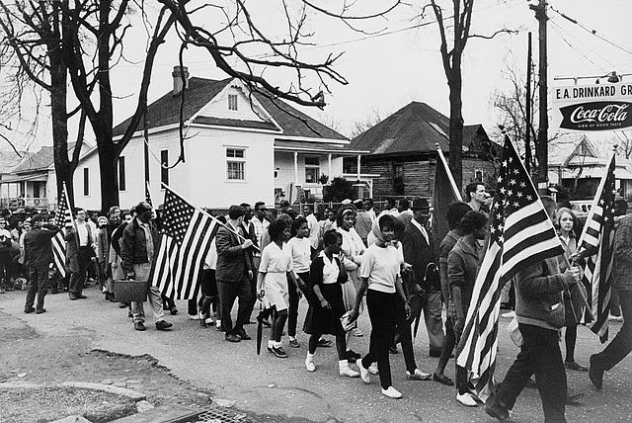
One of the most significant murders of the Civil Rights Movement was that of 26-year-old Jimmie Lee Jackson, who was killed while marching in a civil rights protest in Marion, Alabama, on February 18, 1965. Even though it was a peaceful protest and Jackson was unarmed, Alabama State Troopers beat him, and State Trooper James Bonard Fowler shot him. Jackson died eight days later in the hospital. His death was incredibly influential in motivating the marches from Selma to Montgomery that happened in March 1965. These protests also led to violence, but helped tremendously in the civil rights movement, and in August 1965, the Voting Rights Act was passed, which was a huge landmark in the Civil Rights Movement.
However, the killing of Jackson remained unsolved. Two grand juries looked at the murder in the 1960s but didn’t pursue any charges. In 2004, Fowler was talking to a reporter, and he said that he shot Jackson but claimed it was in self-defense. This led to investigators reopening the case, and in November 2010, 45 years after the killing, Fowler, who was then 77, confessed to shooting Jackson in 1965; he said he was sorry for doing it. He pleaded guilty to misdemeanor manslaughter and was given six months of probation.
Robert Grimminck is a Canadian crime-fiction writer. You can follow him on Facebook, on Twitter, or visit his website.


